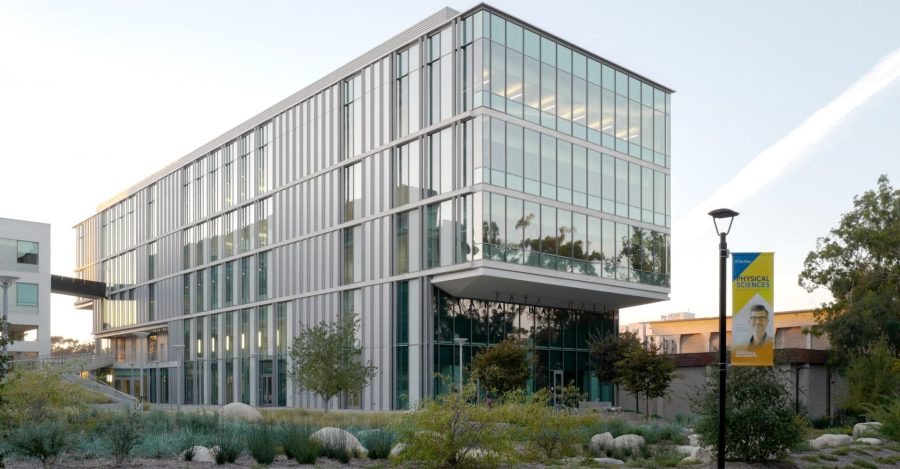On Thursday, Feb. 25, UC San Diego Chancellor Pradeep K. Khosla, along with three UCSD biological science professors discussed campus breakthroughs and lab work regarding COVID-19. They discussed how the campus braced itself for the pandemic as well as how existing labs on campus adjusted their work to conduct research on SARS-CoV-2.
Hosted by Richard C. Atkinson Endowed Chair Dean Kit Pogliano, the event started with questions for Chancellor Khosla about the successes of UCSD’s nationally recognized Return to Learn Program. The program, which has guided the UCSD community through the pandemic with testing and vaccination plans, initiated in February, a month before the California stay-at-home order was announced, Khosla explained.
“I think what made it possible was my understanding that we had just about every specialty that was needed to address this problem here on campus,” Khosla said. “I knew we had a very collaborative faculty who would cross boundaries and I just made sure that money and resources were not gonna be an impediment. So I promised myself that we’re not going to use money as a reason to not do the right thing.”
When asked about his message to people unsure about getting the COVID-19 vaccine and those who are frustrated and still waiting to be vaccinated, Khosla stated, “Be patient… we’ve been in this [quarantine] for a year now. I think when I look at the situation right now, by mid-April we should have a lot of vaccine availability.”
The panel then moved on to Professor Omar Akbari who explained how campus testing for COVID works. Using nucleic acid testing, his lab utilizes a new genetic editing technology for detecting COVID, called CRISPR. Researchers take RNA from a potential COVID-19 sample — which is taken from patients via saliva or nose swab — and isolates it in order to put it into a reaction (RT-RPA). The RT-RPA converts viral RNA into DNA which then goes through a second reaction that detects the presence of the virus within the given sample.
While there are 3 methods of COVID diagnostics, including antigen testing, antibody testing, and nucleic acid testing, Akbari’s lab uses CRISPR testing because it is the fastest method. Although it currently takes only 15–60 minutes to complete, Akbari expressed that they are working to improve its reaction time further.
“We really want to focus on developing a rapid airport diagnostic because there’s not really anything that exists right now. Something where you can just walk to the terminal and know if you’re negative within minutes,” Akbari explained.
Next to speak on the panel was Chemistry and Biochemistry Professor Rommie Amaro. Her lab, which has been recognized by The New York Times, revolves around studying spike proteins and constructing images of SARS-CoV-2 proteins on supercomputers.
Amaro’s lab uses computational methods to find details of the atomic level of the virus and its spike protein. The spike proteins latch onto cells in our airway helping the virus enter into our body. Her studies of the virus can be used to explain how COVID spreads from person to person.
Last to speak on the panel was Biological Sciences alum Dan Kolk. Kolk explained how the issues of manufacturing large volumes of COVID tests in March 2020 will change the availability of testing for infectious diseases in the future.
“The pandemic and diagnostic industry response has shown some real issues with medical diagnostic testing particularly with infectious diseases, which is forcing us to rethink the model of how people access infectious disease testing,” Kolk said. “The medical consumer, who already wanted to be more involved in their medical decision making and control of what’s going on in their body, they’re gonna be empowered with far more information than was thought possible.”
He explained that testing for COVID as well as other infectious diseases will likely become decentralized, where diagnostic tests will be as common as at-home pregnancy tests. Options like COVID test-by-mail-kits were recently approved by the FDA and will soon be available to the public.
The panel concluded with a Q&A of additional questions from Pogliano.
Photo courtesy of CO Architects.















Raymondseify • Apr 4, 2021 at 2:35 pm
https://covid.dp.ua/
mRYFfQVNAJ • Mar 29, 2021 at 3:39 am
lucky student homework help online essay editing custom writings review simple web service wsdl test
JBPmSLzhvJ • Mar 25, 2021 at 7:15 pm
variables and patterns homework help essay writer help i want to buy a research paper la county library live homework help